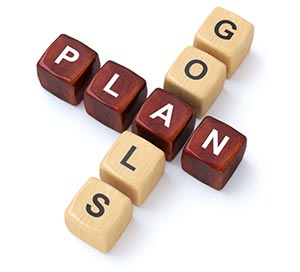Eating a healthy, well balanced and varied diet can help you manage your weight and help improve your general health and well being. It can also help reduce the risk of developing conditions such as heart disease, high blood pressure, diabetes, strokes and certain cancers.
To find out how to get the balance right, visit:
It’s also worth noting that some drinks can be high in sugar and calories and by having too many calories you are more likely to put weight on. In order to lose weight most adult need to eat and drink fewer calories.
Eating for Weight Loss
Eating for weight loss is not just about choosing healthier foods, it is also about monitoring your portion sizes and limiting the amount of high calorie snacks and treats you have.
Here are a few tips to get you started:
- Plan ahead and don’t skip any meals – Eating regular meals is very important for weight control. Missing meals can increase temptation to snack on high calorie, unhealthy snacks.
- Downsize your plates – Use smaller plates and bowls- you’ll give yourself less and are likely to eat less! Eating smaller portions of food is one of the easiest ways to cut calories!
Visit NHS – What does 100 calories look like? For a pictorial guide of 100 calories. - Slow down when your eating – allow your brain time to register that you are full.
- Avoid temptation! – Avoid buying large or super-sized meals when your out – opt for the smaller servings. Likewise don’t buy jumbo bags of crisps or king sized bars of chocolate instead choose the individual sized bags or the mini chocolate bars – you are less tempted to overeat!
- Avoid distractions when eating for example eating whilst on the phone or watching TV. Focus more on the food you’re eating this may help to prevent you overeating.
- Read food labels and choose single servings. Many pre-packed foods contain more than one serving, make sure you only eat one serving!
Set S.M.A.R.T Goals!
Before you start to take control of your weight, it is important that you are clear and understand the healthy eating goals and targets you wish to achieve. Write down your goals and include step by step details of how you are going to achieve them.
Set yourself S.M.A.R.T healthy eating goals. S.M.A.R.T goals are ones that are Specific, Measurable, Achievable, Realistic and Time limited. S.M.A.R.T goals are easy to monitor, you should have no problem identifying when you make progress.
Start by setting just 1 or 2 goals. Don’t make lots of changes all at once!
 Examples of SMART healthy eating goals:
Examples of SMART healthy eating goals:
- Eat 3 smaller meals each day.
- Eat a breakfast everyday.
- Reduce portion sizes by using smaller plates and bowls.
- Take a piece of fruit to work each day.
- Serve at least one portion of vegetables with my evening meal on 5 days of the week.
- Cut back chocolate intake to one fun sized bar only 3 times a week.
- Ask for a side salad instead of chips at lunchtime at the works canteen.
Setting and recording your own personal goals is a great way to keep you focused. You are more likely to reach your goals if you write them down and display them somewhere as a reminder – next to your desk at work, on the fridge door or store them on your phone!
Small changes make a big difference over time
Make small, permanent changes to what you eat and drink and your activity levels over time and gradually build these changes into your daily routine. In no time at all these healthy habits will become second nature and you will be more likely to stick with them longer term.
You’ll be more successful at sticking to new changes if you base them on SMART goals.
SMART Tips to Healthier Cooking
- Use healthier cooking methods – Oven bake, steam, grill, boil, stir fry or microwave instead of deep frying. If you do choose to fry, use a non stick pan with a lid and try to limit the oil you use or use a spray oil.
- Replace higher fat products with lower fat ones – eg replace meat with vegetables and pulses such as beans, use natural low fat yoghurt or low fat crème fraiche instead of cream, use lower fat cheeses and semi skimmed milk in recipes.
- Be adventurous with different herbs and spices rather than using fat or salt to flavour your food.
- Avoid full fat sauces/mayonnaises – could you serve them on the side or try low fat varieties instead?
- Trim all visible fat off meat before cooking and drain off any liquid accumulated during cooking. Choose leaner cuts of meat whenever you can.
SMART Tips to Eating Out
- Plan ahead – Could you look at the menu before you go?
- Don’t be afraid to ask – for a smaller portion or how the meal is served. Ask for dressings and sauces on the side then you can decide how much you want to add.
- Portion sizes tend to be larger when you eat out, so don’t feel you need to finish your plate.
- Consider skipping a starter or pudding or even share with someone rather than eating it all to yourself.
- Try to choose the healthier option off the menu – go for tomato based sauces rather than cheesy, creamy ones and try to avoid high calorie ‘extras’ such as garlic bread / onion rings/ chips / pastry.
- Be careful at buffet or BBQ meals – choose small portions and try to avoid seconds.
SMART Tips to Shopping
- Check the labels when shopping and choose the healthier option, go for green. The more red choices you make the higher your diet will be in fat, sugar and salt.
- Write a shopping list before you go. By planning your meals you’re less likely to buy foods that you don’t need and you could even save yourself some money.
- Some people find shopping online helps them stick to their weekly meal plan – you are less likely to be tempted by instore bargains and offers.
- Avoid shopping when you’re hungry, tired or stressed, you may be more tempted to pick up treats.
- Stock your cupboards and fridge with healthy foods and snacks, avoid buying unhealthy treats, then your less likely to tempt yourself.
- Look out for fresh fruit and veg which is in season – it’s cheaper and tastier. Remember frozen and tinned fruit and veg count towards your 5 a day, opt for ones with no added sugar or salt.
SMART Tips to Planning meals
- Try to have three meals a day and don’t skip breakfast.
- Rebalance the portions on your plate, at main meals bulk your plate out with vegetables, try to serve two portions of vegetables with your main meals.
- Have some starchy foods such as bread, rice, pasta, potatoes at each meal and choose wholegrain, high fibre versions whenever you can.
- Serve 2 or 3 portions of protein foods such as meat, fish or alternatives eg eggs, pulses such as peas, beans, lentils over the day.
SMART Tips to Eating Behaviours
- Avoid distractions whilst your eating meals, turn off the TV, tablets, computers, mobile phone etc and be more mindful of your mouthfuls.
- Try eating mindfully – Take your time when you’re eating, slow down and make sure you enjoy every mouthful / bite. Try putting your knife and fork down between bites and swallow your first mouthful before thinking about the next.
- Have you thought about the size of your plates? By using smaller plates you’ll serve smaller portions and this will help you eat less calories overall.
- Avoid putting serving dishes on the table. Portion your meal when serving and freeze or chill the leftovers for later.
- When you achieve one of your goals, remember to reward yourself with a non food treat such as a manicure, facial, magazine, book or some new leisure wear or trainers.
- Don’t deprive yourself of treats, nothing is completely banned, treats high in calories should only be enjoyed occasionally rather than eaten every day.
SMART Tips to Drinking Less Alcohol
- Watch out, drinking alcohol is very high in calories and can lead to weight gain.
- Try to stick to sensible / recommended levels – men and women are advised not to drink more than 14 units a week on a regular basis.
- Try to have several drink-free days each week, this will help you save on calories.
- Alcohol is an appetite stimulant, often the next day so try and prepare for this.
- Don’t drink on an empty stomach, you might be more tempted to reach for high calories snacks like crisps or nuts or dropping in for a kebab or chippie on the way home from a night out.
- Just don’t buy alcohol–the less you keep in the house, the less tempted you will be to drink it.
- Use low calorie mixer drinks such as soda water, diet cola / lemonade or tonic water and alternate alcoholic drinks with a low calorie, soft drink.
Things to remember:
- Recognize your achievements – Reward yourself once you’ve reached your goal. Treat yourself to a new top or a bottle of perfume/aftershave or go ten pin bowling.
- Accept that personal goals are not set in stone The goals you set yourself should be reviewed regularly and if necessary changed over time.
- Stay focused – Don’t get too upset if you don’t manage to reach one of your goals instead focus your thoughts on getting back on track as quickly as possible. Remind yourself of the reasons why you want to lose weight and feel encouraged by your achievements so far.
Structured Eating Plan
If you feel you would prefer a more structured approach to weight loss, with a guide to portion sizes and servings you should be aiming for, then visit The British Dietetic Associations – Weight Wise:
Further Information (External Websites)
- Alcohol
- Eatwell Guide
- Eatwell Everyday
- Food Labelling
- Healthier Food Swaps
- Recipes – Parent Club
- Lose Weight
- 12 Week Weight Management Programme

